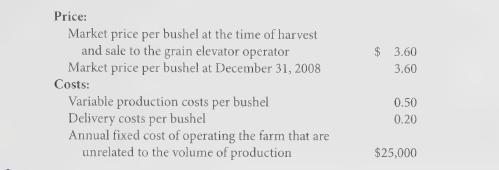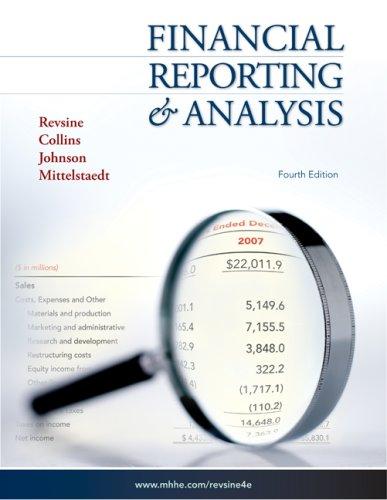Thomas Smith owns and operates a farm in Kansas. During 2008, he produced and harvested 40,000 bushels
Question:
Thomas Smith owns and operates a farm in Kansas. During 2008, he produced and harvested 40,000 bushels of wheat. He had no inventory of wheat at the start of the year. Immediately after harvesting the wheat in the late summer of 2008, Smith sold 30,000 bushels to a local grain elevator operator. As of December 31, 2008, he had received payment for 20,000 bushels. Additional information relating to the farm follows:

Required:
1. Prepare a 2008 income statement for Smith’s farm under each of the following assumptions regarding what constitutes the “critical event” in the process of recognizing income:
a. Assuming that production is the critical event.
b. Assuming that the sale is the critical event.
c. Assuming that cash collection is the critical event.
(For simplicity, treat the fixed operating costs as period rather than product costs.)
2. Determine the December 31, 2008 balances for Wheat inventory and Accounts receivable under each of the three income recognition methods in requirement 1.
3. Assume that the farm is left idle during 2009. With no harvest, Smith’s only transaction consists of an October 2009 sale of the 10,000 bushels in inventory at $2.80 per bushel.
Further assume that no fixed costs are incurred while the farm is idle.
Compute 2009 income on both the sale and production basis. Discuss the causes for any profit or loss reported under each income determination alternative.
Step by Step Answer:






